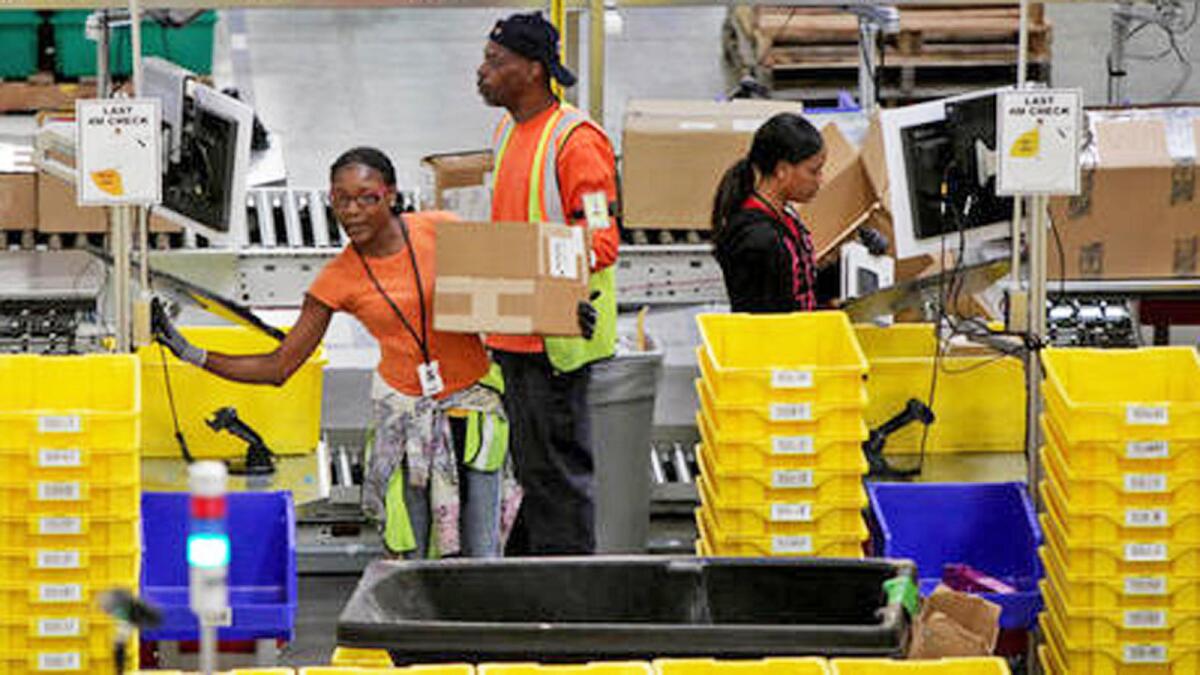Inland Empire: poised to be a ‘big dog’ in California economy?

- Share via
Much of California is still struggling: The strong dollar is depressing Central Valley agricultural exports, the lowest oil prices in years are squeezing the Kern County oil fields and extreme housing prices along the coastline are giving potential home buyers pause.
But in Riverside and San Bernardino counties, those factors are fueling a growth spurt that’s already among the fastest in the state, according to a report released at an economic conference in Ontario on Thursday.
The Inland Empire was among the regions hardest hit by the recession in California, but it has since added back jobs at a pace exceeded only by the flourishing tech hubs in San Francisco and Santa Clara, said John Husing, chief economist for the Inland Empire Economic Partnership.
“We were in a hole, but we climbed the ladder and now we’re out in the sunshine,” Husing said at the event at the DoubleTree Hotel near Ontario Airport.
The unemployment rate in the Inland Empire fell to 7.3% in January from a high of 14.2% in October 2009. The region, which hit a low of 1.14 million jobs in February 2010, currently supports a record 1.31 million jobs.
The low- and middle-wage families that dominate the area are benefiting from sunken oil prices, which encourage spending by making gasoline, food and other purchases more affordable, Husing said.
And although the strong dollar is eating away at American exports, it is boosting the volume of imports flowing through the San Pedro ports and local airports and funneled to the Inland Empire’s vast network of distribution centers.
“That cargo gets handled here and creates jobs here,” Husing said. “That will be a benefit to our region and Southern California even if nationally that’s not a good thing.”
Logistics is “the sector for which we absolutely have the greatest competitive advantage,” he said. No industry in the region has grown faster in the recovery – responsible for a quarter of all new jobs in 2012 and roughly one-fifth in both 2013 and 2014.
Retail giants such as Amazon.com and Macy’s have hustled in recent years to claim space in the region for their fulfillment warehouses. E-commerce currently accounts for 7% of retail revenue; Husing said it could eventually claim 35%.
The local logistics industry could even help boost lagging manufacturing employment, Husing said.
The production process is increasingly being broken up and scattered around the world. Husing believes that the Inland Empire distribution warehouses could do double duty as factories where various component parts are assembled into a final product and delivered to customers.
Industrial vacancy rates in the Inland Empire have fallen to 4.5% from 12.8% during the recession. As of December, 16.9 million square feet of industrial space was under construction in the region – 80% of the total for Southern California.
But Greg Devereaux, chief executive of San Bernardino County, warned that much of the region is owned by the state and federal governments and cannot be developed. Much of the rest isn’t optimal land.
“We have a lot less dirt than we sometimes think we do,” he said. “And many of the areas primed for development don’t have the infrastructure.”
Still, presenters at the conference said construction is recovering in the region. Housing is cheaper than it is along the coast and more affordable for local populations.
“The coast will become too expensive and migration will continue into the Inland Empire,” said Jay Orr, chief administrative officer of Riverside County. “The jobs will come here because housing will be more affordable.”
But building permits are expected to recover at a slower pace in the region compared with the rest of the state, according to the California Home Building Foundation. And the construction industry is still 50,500 jobs short of its pre-recession peak.
Potential homeowners are still dealing with tight mortgage credit. Young would-be buyers aren’t rushing to form families, Husing said.
And the Inland Empire still isn’t as attractive as it needs to be to draw the educated professionals it wants, presenters said.
The region’s healthcare sector continued to expand throughout the recession and recovery, providing well-paying jobs in physicians’ offices, ambulatory services and residential care.
But health workers are over-burdened, each dealing with far more patients than the state average, Husing said.
Many companies offering office-based jobs in engineering, finance, legal and information technology fields consolidated and moved to the coasts during the recession and have been slow to come back.
In part, their hesitation is due to educational levels that, although growing, remain low in the Inland Empire. Just 20% of the region’s adult population holds at least a bachelor’s degree, compared with 30% in Los Angeles and 40% in the Bay Area, Husing said.
“It’s tough for us to get major companies to migrate here to hire with those numbers,” he said.
Presenters, though, were adamant that if Inland Empire governments and organizations can cooperate on workforce training and community development projects, the region may become a major economic competitor to its more urban neighbors.
“We need to step up and show that we are a big dog and bark real loud, even if we don’t bite,” said Orr of Riverside. “If you’re a business person, I continue to say, ‘Bet on the Inland Empire’ – It will continue to grow and as it grows there will be more opportunity.”
Twitter: @tiffhsulatimes
More to Read
Inside the business of entertainment
The Wide Shot brings you news, analysis and insights on everything from streaming wars to production — and what it all means for the future.
You may occasionally receive promotional content from the Los Angeles Times.











